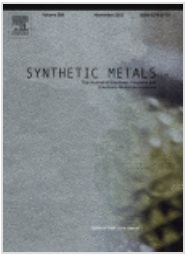In this work we report a reproducible and efficient method of surface modification of titania nanoparticles (rutile) via reversible-deactivation radical polymerization. Herein, we graft poly(di(ethylene glycol) methyl ether methacrylate) from the surface of TiO2 in an amount of 21 wt% within the reaction time of 3 h 15 min. The amount of grafted polymer was assessed by Thermogravimetric Analysis and it is one of the highest reported till now for this ceramic nanoparticles by atom transfer radical polymerization. The properties of inorganic-organic, i.e. core–shell material, as well as of pristine TiO2 and neat polymer were examined by Infrared and Dielectric Spectroscopies. The shape of the nanoparticles and the thickness of the polymer coating shell were investigated by means of High Resolution Transmission Electron Microscopy. The obtained nanocomposite exhibits dielectric permittivity ϵ′ = 18 and loss tangent around 1 × 10−2 at 20 °C. The described method allows controlling a length and chemical structure of the grafted polymer from ceramic core, thus to tailor a physical properties of nanoparticles and of nanocomposites.

